Royal lights of the Benelux. The eighth day. How we participated in the marathon in Luxembourg : 比荷卢的皇家灯。
The Grand Duchy of Luxembourg is the third country from the commonwealth of Benelux, where we visited the tour "The Royal Lights of the Benelux." We stayed there for 24 hours, and at the same time managed to "become participants" of the annual night marathon, listened to how to "light up" the samba, tasted the Mozel wines, rode the cable car, made a march through the Ardennes mountains, and, of course, saw incredible beauties Luxembourg and its eponymous capital. And they say that it's boring in Luxembourg.
Prior to Luxembourg, we already fairly pokosilis in Western Europe and immediately noticed that even against the background of the neighbors Luxembourg looks more prosperous. This very small state was able to provide its citizens a very decent life. And, perhaps, the root cause in the Luxembourgers themselves. It's not accidental that their national motto "We want to remain who we are". Luxembourg was not for long in its more than a thousand-year history. Its territory was part of or was the property of succeeding rulers of Burgundy, the Holy Roman Empire, Spain, France and even the Netherlands. And it all began in 963, when the local feudal lord Count Siegfried on the rock Le Bock built a fortress on the site of the former Roman fort, which was called Lucilinburgh (from the Old High German "lucilinburch" - "small town"), So there was a county Luxembourg. Later in 1354, it became a duchy, and in 1815 - a grand duchy. According to my calculations, proceeding from the historical pattern, somewhere in the year 2200 Luxembourg should become a kingdom.:)
In the eponymous capital of the Grand Duchy of Luxembourg, we arrived shortly before noon and immediately went on a sightseeing tour around the city. Even at first glance, Luxembourg is struck by its complex terrain: the terrain is rugged by the deep valleys of the meandering Alzette River and its Petrus tributary. In this regard, the city is divided into Upper and Lower. Once the rivers were fuller than today, and formed deep gorges with steep cliffs, in the depths of which many cameras and tunnels have been dug. Casemates are one of the unique attractions of Luxembourg. The first casemates appeared in the XVII century in the thickness of the rock Le Bock under an impregnable fortress, the remains of which can now be found in the Upper City. At present, 17 out of 23 kilometers of underground labyrinths have been preserved, dug at different depths, the maximum depth is 40 meters. Casemates have many open exits in a steep rock at considerable height. In Luxembourg, you can visit two dungeons - Petrus and Bock. Entrance to the casemates Petrus is at the monument "Golden Frau", the entrance to the casemates of Bok next to the church of St. Michael.
Through the dense valleys of rivers in the green, many bridges are thrown. In one guide I read that there are about a hundred of them in Luxembourg. The most famous and photographed of them is the bridge of Adolf. The arched bridge stretches over the picturesque valley of the Petrus River in 1903, bearing the name of the then Grand Duke of Luxembourg, Adolph. It was called "New", because not far from the bridge Passerelle was built in 1861, which accordingly became "Old".
The bridge of Adolf
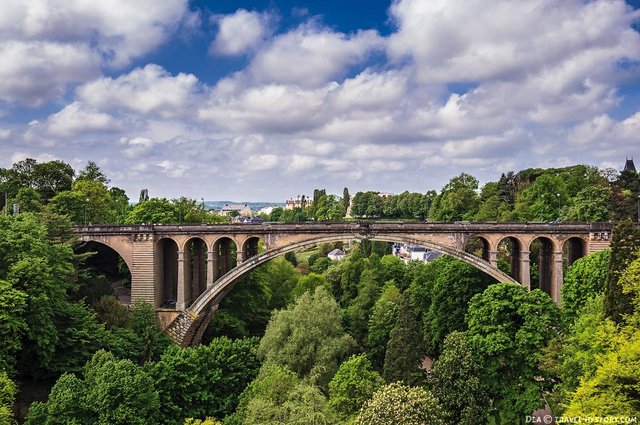
Passerelle Bridge
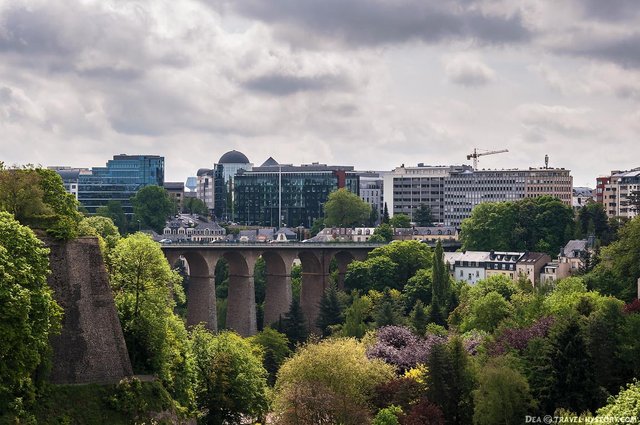
Valley Petrus
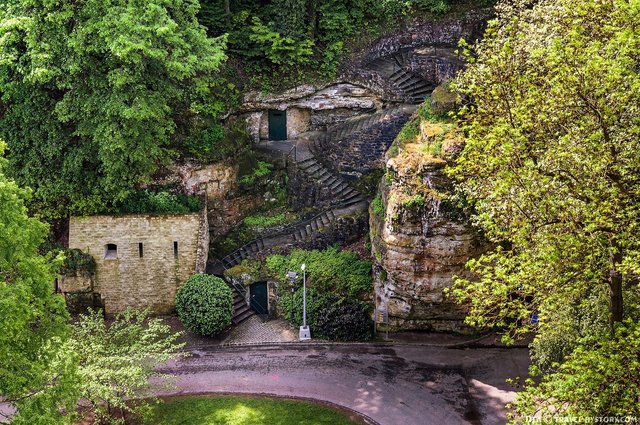
Due to its relief, Luxembourg is incredibly photogenic. In the city there are many viewing platforms, where from the height you can, I'm not afraid of this word, admire the surrounding beauty. In the Upper Town between the bridges of Adolf and Passerelle is the Constitution Square, which is actually an observation deck, a balcony overhanging the Petrus Valley. It is with her that you get the best photos of bridges and valleys.
Constitution Square
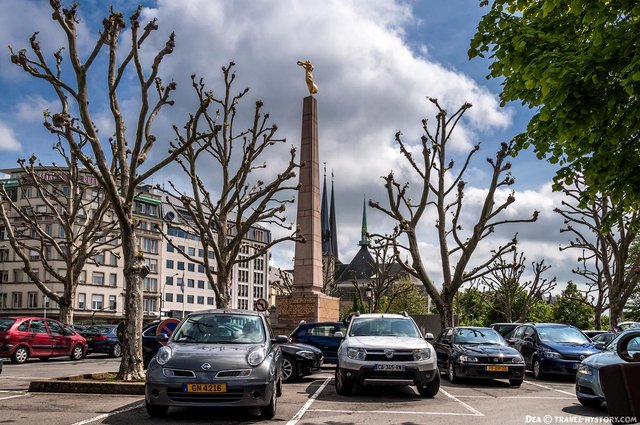
View from the observation deck
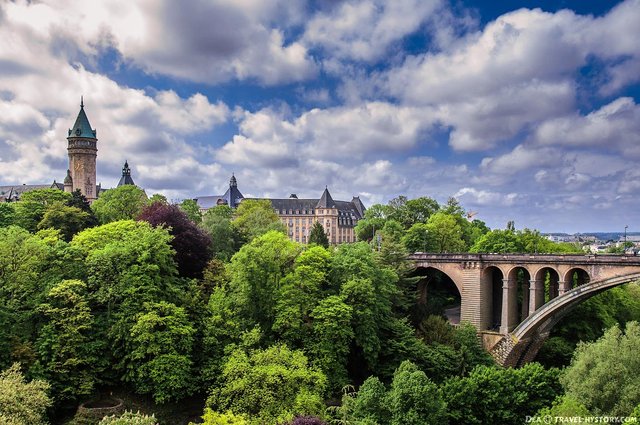
In the center of the Constitution Square stands a monument to thousands of Luxembourgers who voluntarily fought the armed forces of the allied states during both the world and Korean wars. Originally it was installed in 1923 in memory of those killed in the First World War. The monument is called the "Golden Frau", because on the top of the 21-meter granite obelisk there is a gilded bronze statue of the goddess of victory Nicky with a laurel wreath in her hands. During the German occupation, the World World Monument was destroyed, and the statue disappeared. After the war, it was rebuilt without a statue of Nicky, which was found only in 1980 under the rostrum of the national football stadium. After five years, the monument acquired its original appearance.
Gold Frau
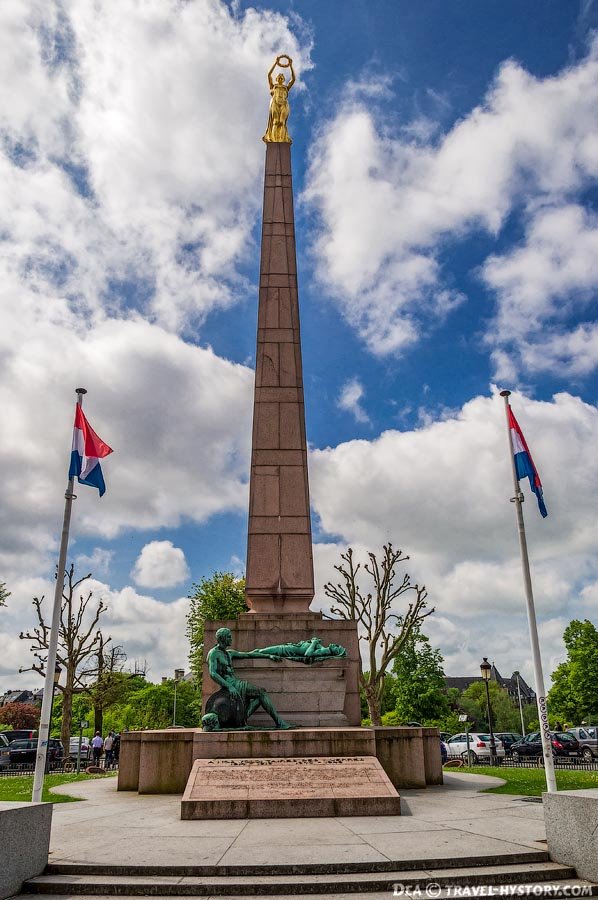
A stone's throw from Constitution Square is the main temple of Luxembourg - the Cathedral of Our Lady (Notre-Dame Cathedral). Outwardly, he looks rather modest. Originally it was a Jesuit church, built in the early 17th century in the Gothic style, although at that time Gothic was not popular in construction.
The Cathedral of Our Lady (Notre-Dame Cathedral)
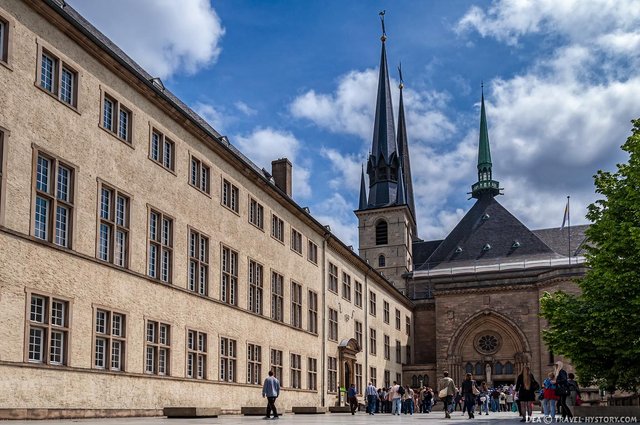
Inside the cathedral makes more impression than outside. Suddenly, columns with a Moorish pattern and tapestries on the walls look.
Altar

Columns with Moorish pattern
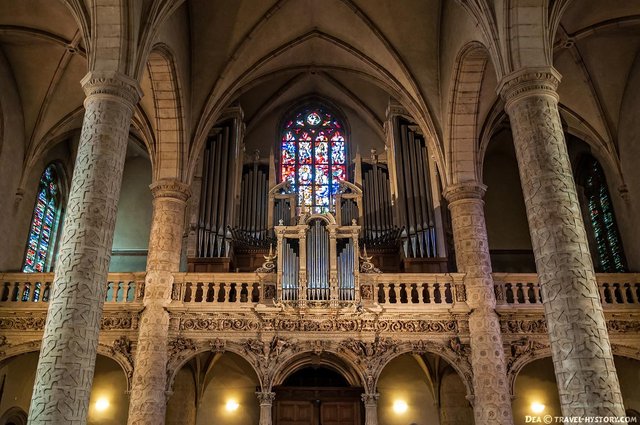
In the cathedral there were not so many people, it was possible to photograph. This man stood in the aisle and got in the frame. He gestured: "Sorry, I'm going now" and walked away.:)
Sorry, I'm going now.
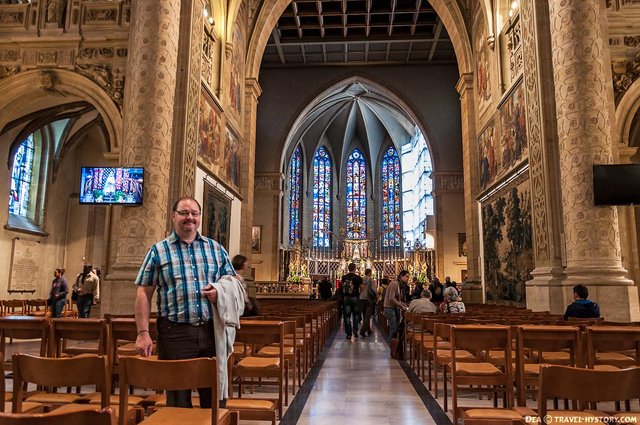
Coming out of the cathedral, we almost immediately found ourselves in a small square where there is a monument to the Grand Duchess Charlotte. There was a mini-presentation. A group of musicians on various percussion instruments "lit" a samba. As it turned out, on this day in Luxembourg the Night Marathon (ING Night Marathon Luxembourg) was held. This event is held annually in late May, beginning in 2006. The race starts at seven in the evening, and ends on a deep night when the last runner finishes. The number of participants is constantly growing, in recent years more than 10 thousand runners have taken part in the marathon, among which there are many foreigners. The length of the route is 42.195 km in some places, winding, with steep slopes and prolonged ascent, passing along the streets, bridges and parks of Luxembourg. You can take part in a half marathon - the length of the route is half that, although 21 km is also not a joke. There is a route for children from 10 years old - 4.2 km, up to 10 years - 1 km. Several hundred musicians along the entire route support the marathon runners with an incendiary samba. And before the marathon starts during the day these samba bands perform in different places, which we actually saw.
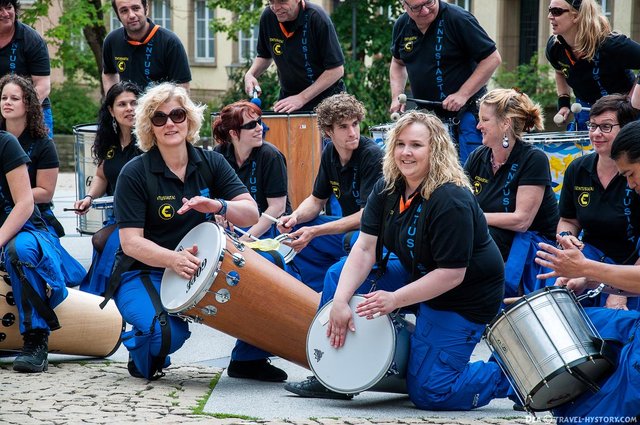
Samba band: the first row sits
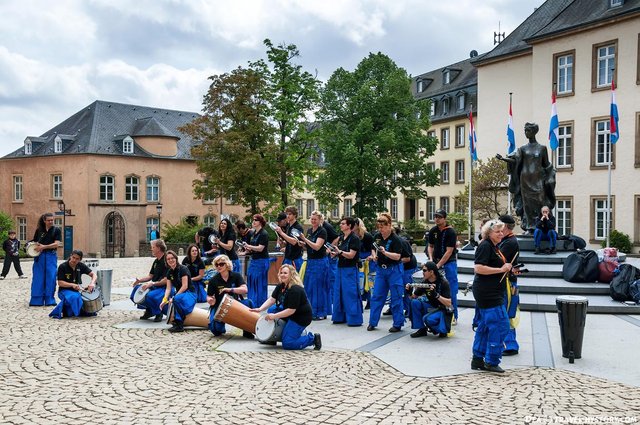
Samba band: everyone is standing
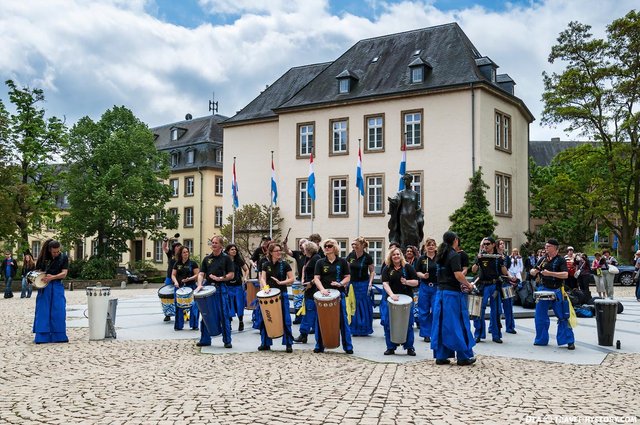
Samba band: now the first and second rows crouched
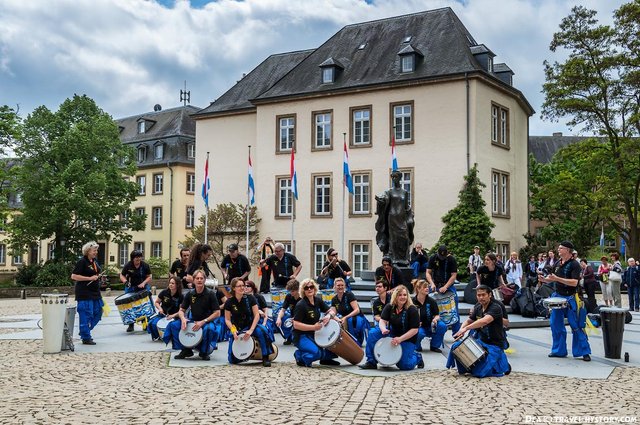
Beat the drum - bam, bam!
In the Upper Town there are many traces of the Middle Ages. Do not think that this is an unfinished fence, which the residents of this house built to close their yard. These are the remnants of the fortification wall, built in about 1050.
Remains of the fortress wall
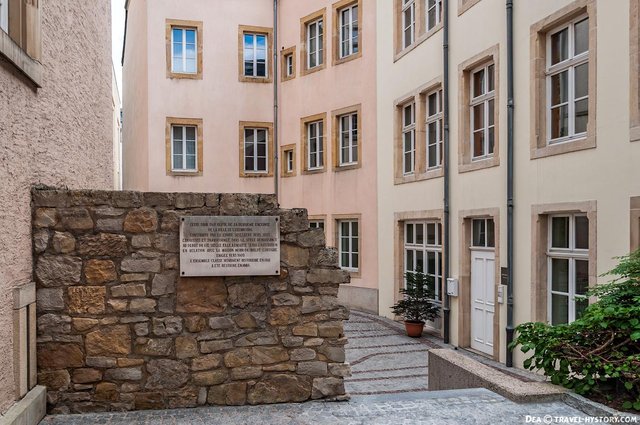
Museum of the History of Luxembourg, met us on the road
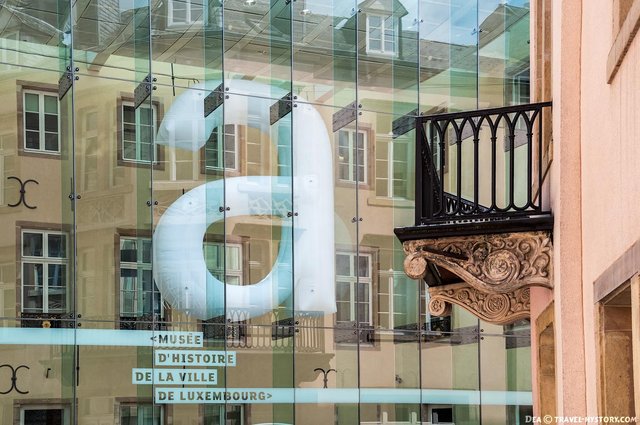
The eastern side of the Upper Town is the oldest part of Luxembourg. In this place there was an impregnable fortress, that's why the remains of fortress walls, bastions and towers were preserved here. Narrow streets run down to the river with a serpentine.
Streets descend to the river
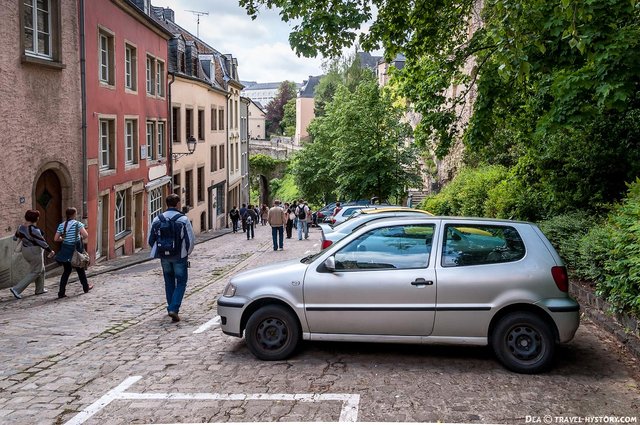
Fortress wall
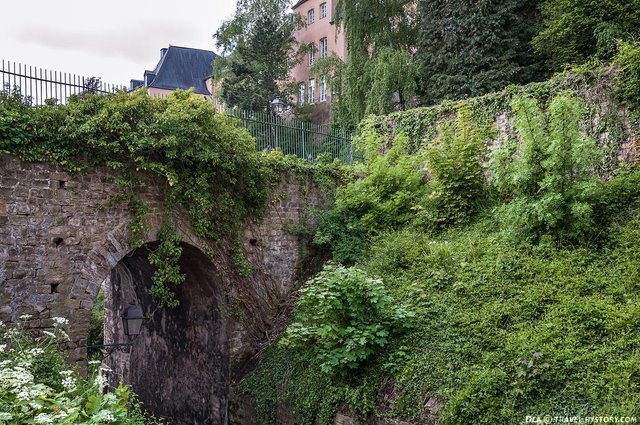
Arch
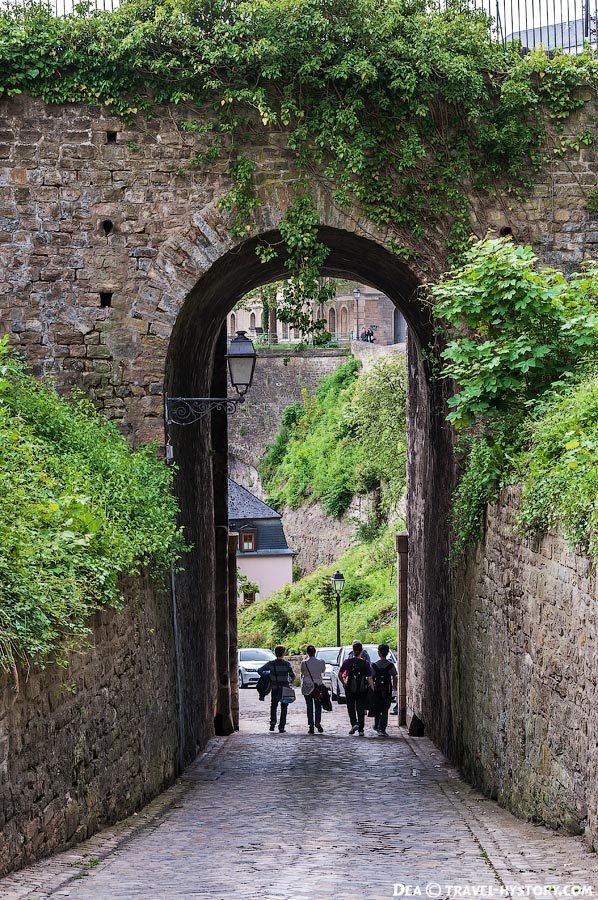
There are many observation platforms hanging over the Alzet valley, which is even more attractive than the Petrus Valley with the presence of ancient buildings, among which is the Neumünster Abbey Abbey. The abbey was built in 1606. Although what we see now is the buildings that were rebuilt after the fire of 1684. The abbey at different times managed to visit both the barracks, and even the prison. Now it houses the cultural center and the functioning church of St. John.
Alzet Valley
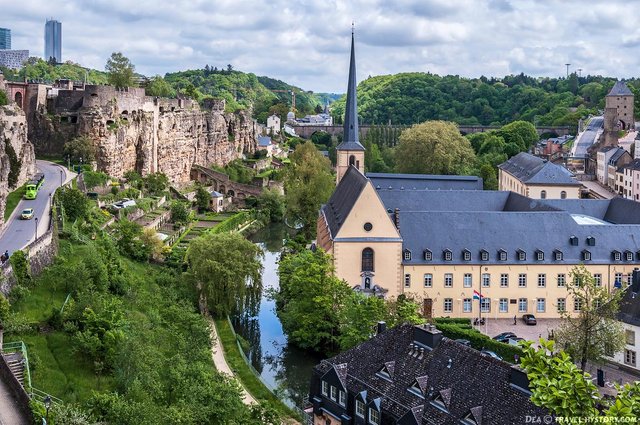
Alzet River

Abbey of Neumünster Abbey
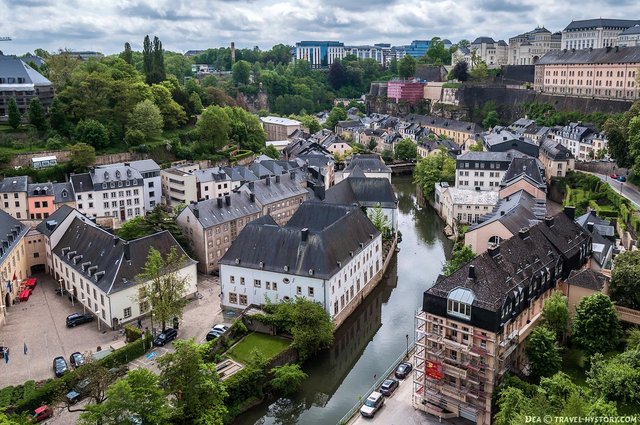
Bridge over the Alzet River
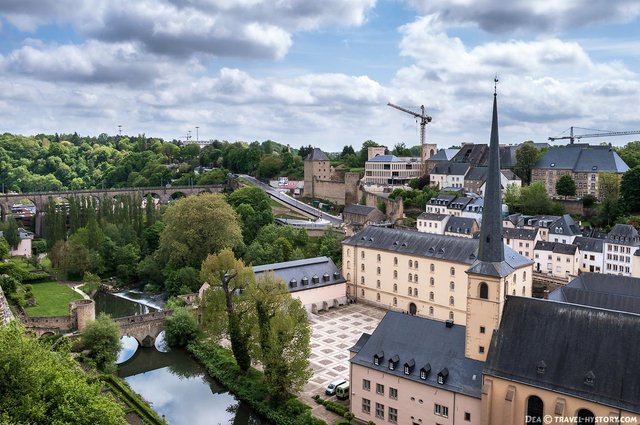
In Luxembourg there are no monumental Gothic cathedrals. Even the oldest church - the church of St. Michael was built in the XVII century. On this site was the palace chapel of Count Siegfried, in 987, consecrated as the Church of the Atonement. She repeatedly rebuilt, and now in the church of St. Michael preserved some of its remains. What exactly, I do not know, we did not go to church.
Church of St. Michael
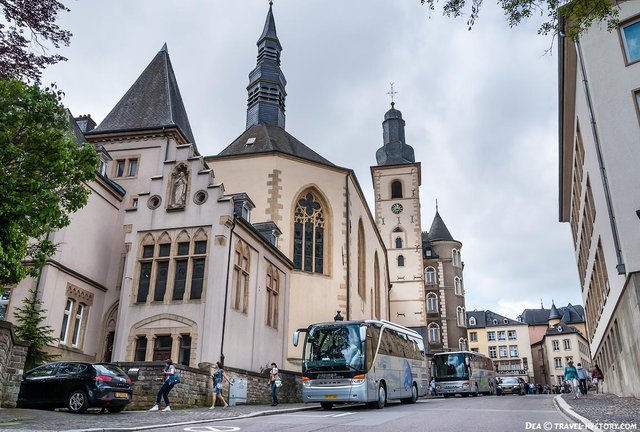
The motto of the Luxembourgers, written on the bay window, says "We want to remain who we are"
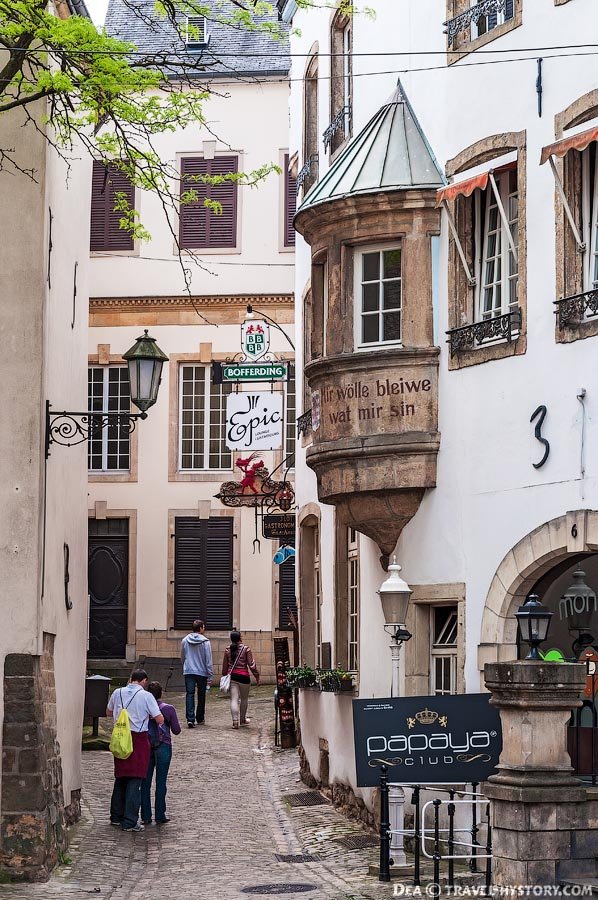
When there are old and modern. On this street, it would be more appropriate to look at a horse
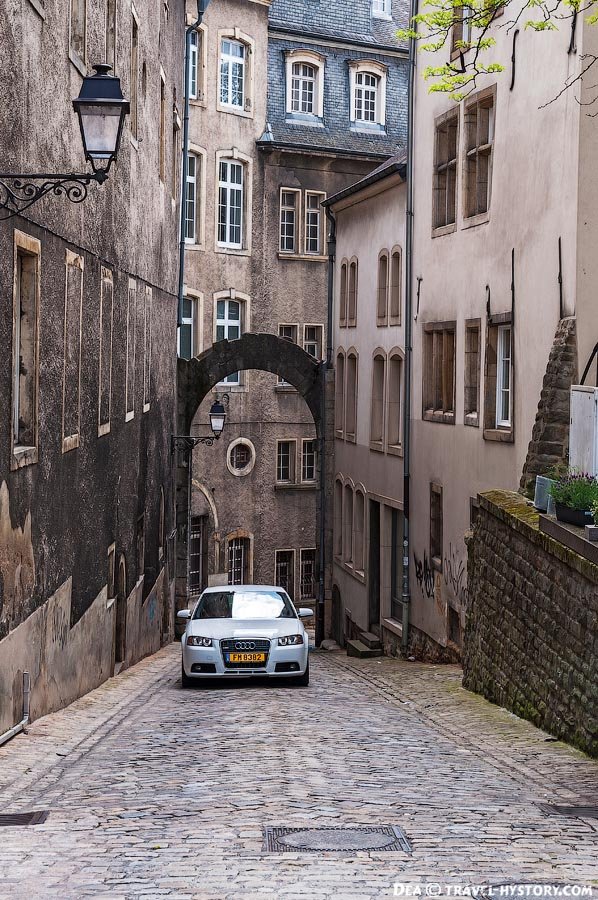
In conclusion of our walking tour of Luxembourg, we went to see where the Grand Duke is working.
Our group goes to the Palace of the Grand Dukes
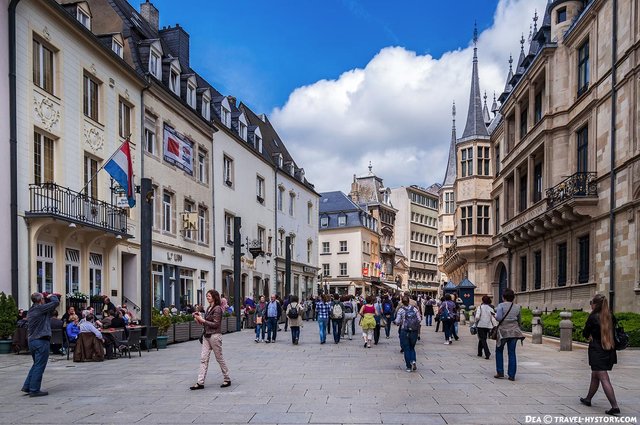
The Palace of the Grand Dukes is its official residence, the duke's family lives in another place. The palace is small and outwardly quite modest, and if it were not for an honor guard at the gate, many tourists would not even pay attention to it.
Palace of the Grand Dukes
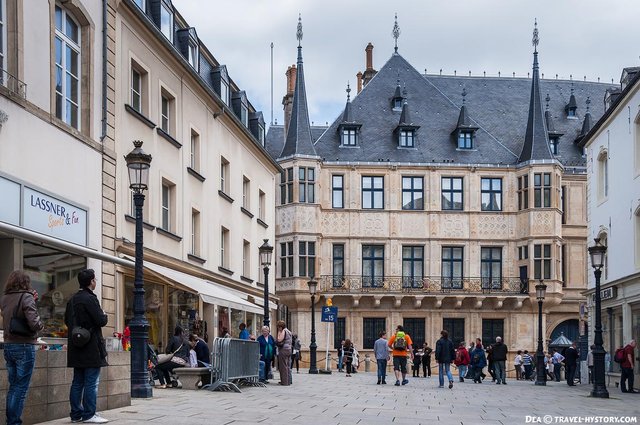
Guard of honor
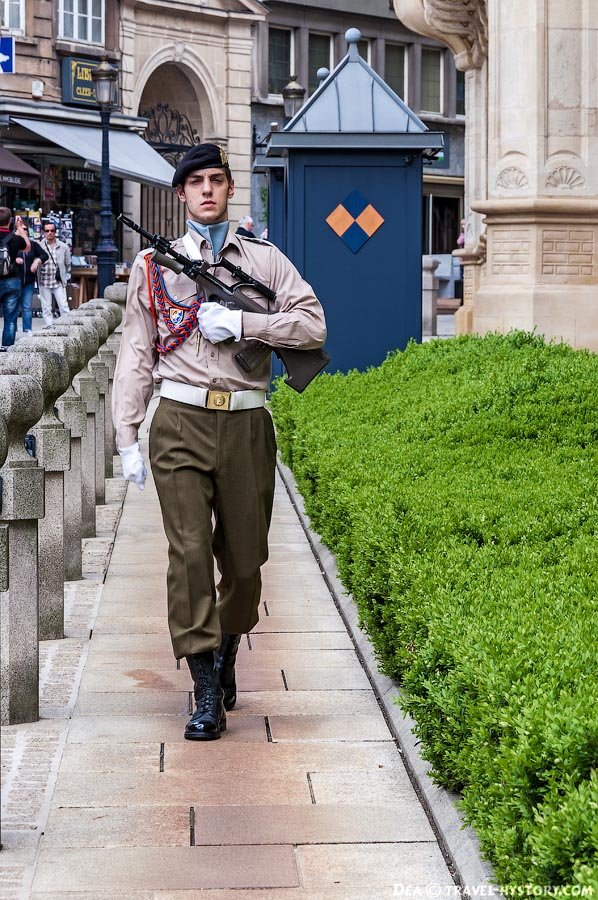
This building was built in 1572 under the town hall, and the ducal palace became only in 1890, when Luxembourg began to rule the dukes, in combination not being the kings of the Netherlands. The history of Luxembourg is not easy and very interesting. Maybe now they rule the king of the Netherlands, if at the end of the XIX century the receiver Willem III had a son instead of a daughter, Wilhelmina, succeeded by the Netherlands and Luxembourg due to Salic Law passed to another branch of the Nassau dynasty. The facade of the Palace of the Grand Dukes as well as the Cathedral of Our Lady is decorated with Moorish patterns. They were built at the time of the Spanish possession, and, probably, the influence of Spain manifested itself in architecture.
Having met the capital of Luxembourg, we have a choice: to continue independently to walk around the city or go on a tour of the Moselle valley. Of course, to go down to the Lower City, go to the catacombs, climb the remains of the fortress is very interesting. But the Moselle valley attracted us more. I will write about it later.
Our tour of Luxembourg ended where it started - on the Constitution Square
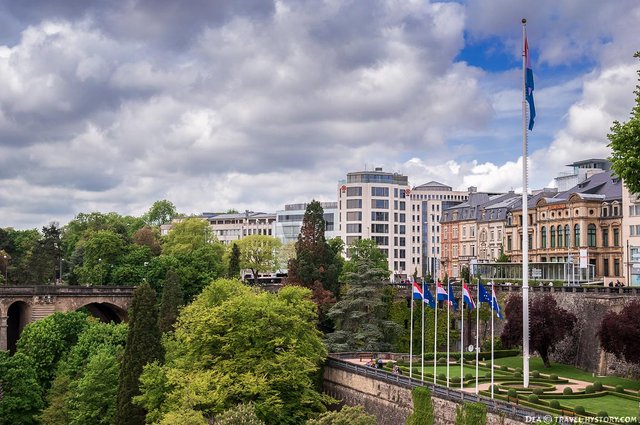
Returning to Luxembourg around eight in the evening, our group encountered some difficulties. The night marathon has already begun, and the whole center was closed. Therefore, to approach the bus to the hotel, located near the bridge of Adolf was impossible. The bus driver did not give up hope to break through some narrow streets, and thus distanced us from the goal. When hope "died", he dropped us off the bus. A group of fifty people was on the track of the marathon. We were running past the participants of the race, and we also ran, with huge bags and suitcases on the wheels, many ladies in their ages. Throughout the road along the roadside, as well as on the balconies and in the windows of the houses, the fans stood and greeted us with a wave and shouted something. So we also took part in the marathon. The runner from Kenya won the marathon, which ran the distance for 2.15 hours. In general,
Night Marathon is not only a sporting event, it is a real holiday. Many participants run a distance in funny carnival costumes. The sponsor of the marathon bank ING gives out to fans orange hats, palms and other attributes. After the finish people still have fun.
Marathon runners
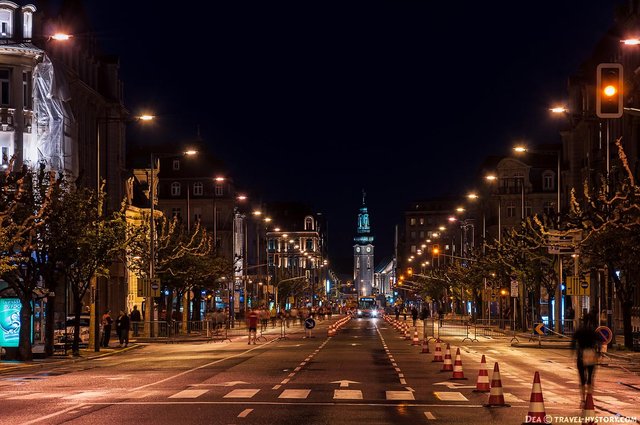
Another Samba band
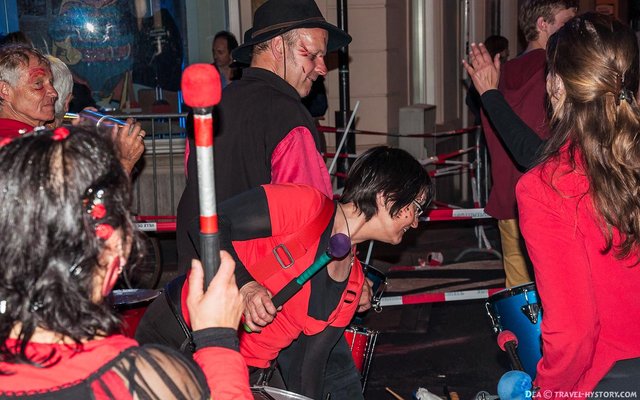
In Luxembourg, we finally uncovered a tripod and photographed the night city.
Night Luxembourg
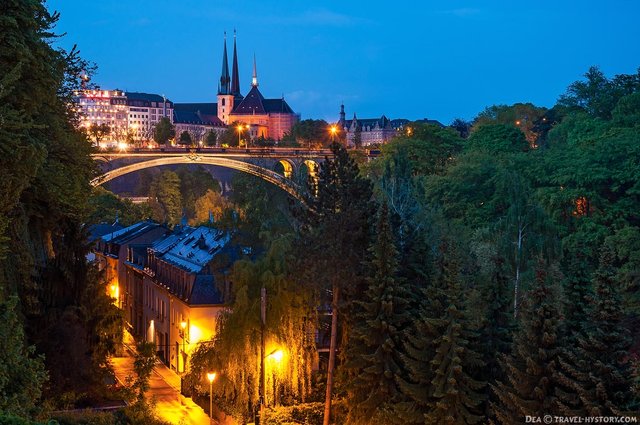
The Cathedral of Our Lady and the Grand Hotel Cravat
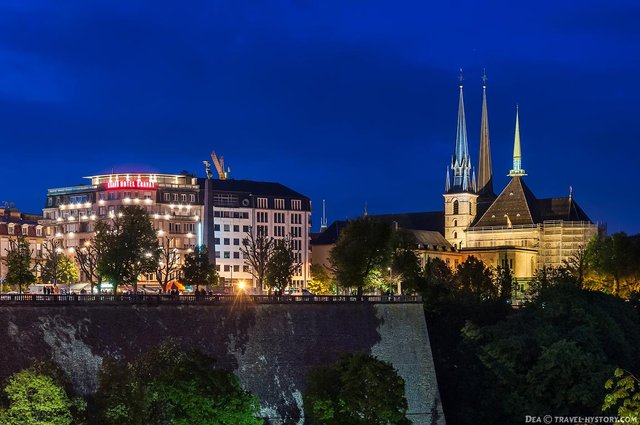
We took a tripod, hoping to photograph Amsterdam at night. But, unfortunately, for three evenings, that we were there, somehow did not work out. I think that the reason is in the distance from the center of our Amsterdam hotel. And the hotel in Luxembourg was in the center, which allowed you to run behind a tripod and after a walk until late at night.
Night Luxembourg is incredibly photogenic! Although its illuminated bridges are not reflected in the watery surface, they hang over the night forest.
The bridge of Adolph in the fires
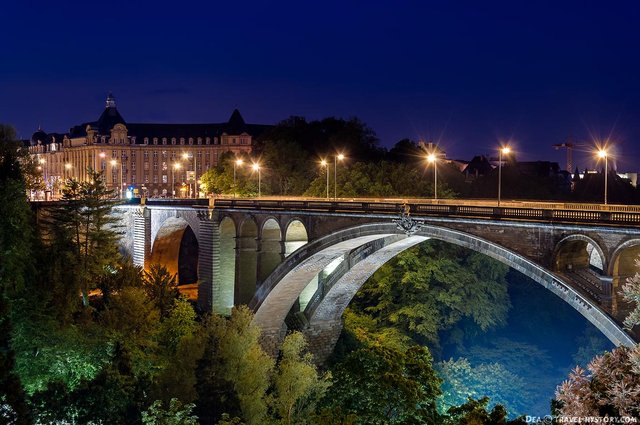
Glowing arch of Passerelle bridge
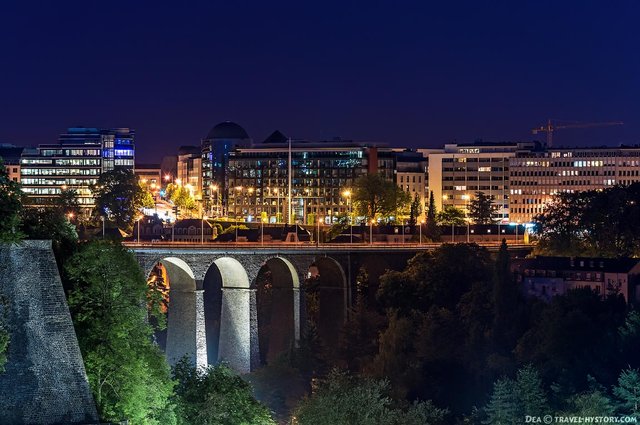
The marathon ended, everyone went home
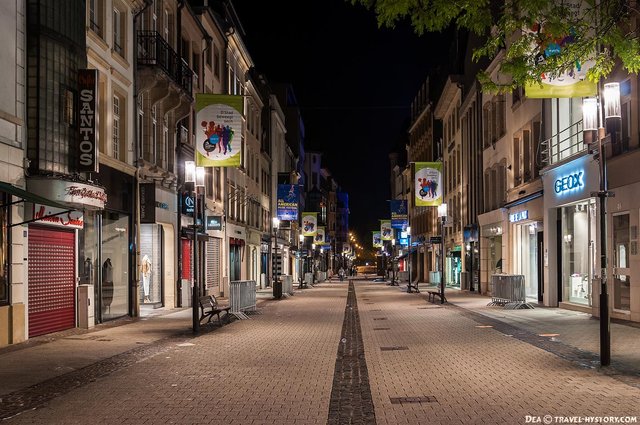
Our trip to Benelux ended. The next few days we were inexorably approaching the house, stopping on small excursions in Germany and Poland.
我们的比荷卢斯之行结束了。在接下来的几天里,我们无法抵挡住这个房子,停在德国和波兰的小游览活动中